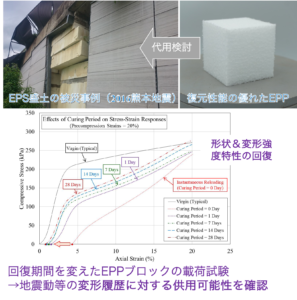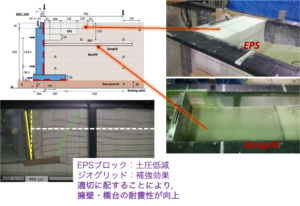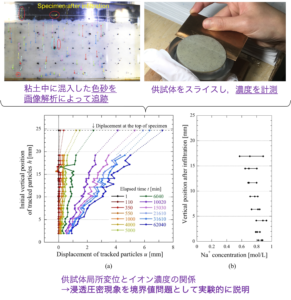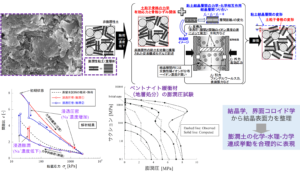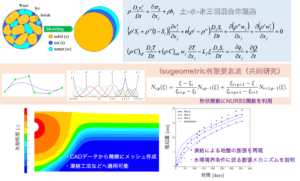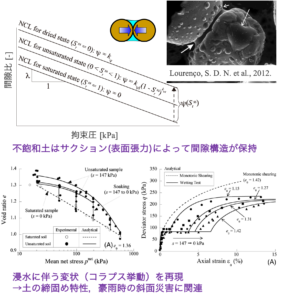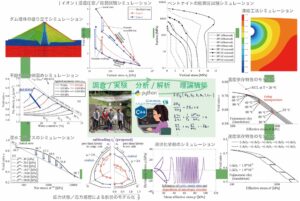Utilizing EPP (Expanded polypropylene) block for a soil structure
Expanded polystyrene (EPS) is widely used as a lightweight fill method for filling on soft ground, backfilling structures, and widening road embankments. On the other hand, EPS road embankments on steep slopes were reported to have been partially damaged by the 2016 Kumamoto earthquake. Although the road embankment has not completely collapsed, the blocks were […]
Seismic resistance of retaining wall and bridge abutments reinforced by EPS and geogrid
Ground reinforcement methods such as geogrid reinforced soil retaining walls, which have been proven to have high seismic resistance, increase the resistance of retaining walls to seismic motion. On the other hand, a method to reduce seismic earth pressure on the back ground, which is the main cause of movement, is to use expanded polystyrene […]
Interpretation of osmotic consolidation phenomena through local measurements of displacement and cation concentration
Swelling clays such as bentonite are layered minerals composed of negatively charged clay crystals. Cations in the pore water are attracted to the negatively charged mineral crystals. The difference in ionic concentration between the crystals (inside the interlayer) and the pore water generates osmotic pressure, which causes water to move between the crystal layers and […]
Constitutive modeling of expansive soils considering the surface phenomena of mineral crystals
Swelling clays are widely found throughout the world, and are also widely distributed in Japan, mainly in strata from the Neogene period onward. On the other hand, bentonite, a typical swelling clay, is a candidate buffer material for radioactive waste disposal facilities. However, swelling clays are considered as special soils for which no design method […]
Ice-water-soil coupled mixture theory and Isogeometric FEM
When water in the ground transforms into ice, force equilibrium, conservation of mass, and conservation of energy with consideration of latent heat exist for the three phases of soil, water, and ice, and there are interactions among them. In this study, the governing equations for such a soil-water-ice three-phase mixture are formulated. The above mixture […]
Elastoplastic constitutive model for unsaturated soils
Surface tension acts at the interface between water and air. The surface tension attracts soil particles in unsaturated soil, making the soil stronger and stiffer.In order to consider the effect of surface tension (suction) on deformation strength characteristics, this study proposes an elastoplastic model in which the normal consolidation line, which defines the soil existence […]
Modified stress considering the fabric of soil particles and the elastoplastic constitutive model
As an aggregate of particles, soil changes its particle structure as a result of stress history. Even if the stress state and density are the same, the soil exhibits various behaviors depending on the differences in particle structure. The fabric tensor, which represents the directional distribution of the particle contact normal, is known as an […]
What is constitutive modeling?
In the physical phenomena we witness, conservation laws of physical quantities (governing equations) such as momentum, mass, and energy are satisfied.In order to predict a phenomenon, the governing equations must be solved, which requires an equation (model) that represents the properties of the material.To solve the equation of equilibrium of an object, a constitutive model […]

